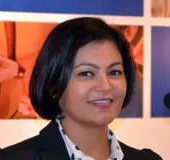
With more than 2.3 million confirmed infections worldwide and a death toll exceeding 160,000, the COVID19 pandemic has already reached unprecedented levels. What started as a localized infection in the wet markets of Wuhan in China has quickly spread to every corner of the world, causing absolute mayhem. But did it really have to pan out in this manner? As preposterous as the response has been from China in unleashing the state machinery to engineer a cover-up, the response by WHO during the initial days of the outbreak has been outlandish.
Bearing in mind the severity of transmission of the pandemic, this unacceptable response from WHO has had devastating consequences with billions of lives being affected. The world should have had more time to mount a response cum containment strategy. Travel restrictions, screening of passengers, advisories for quarantine, social distancing, lockdowns and various other measures in place now, should have been implemented much earlier. A counterfactual aimed at ascertaining the extent of transmission will portend an astonishingly optimistic picture, had the WHO acted timely. The importance of timely action when dealing with a pandemic cannot be overemphasised.
This is not the first instance wherein WHO’s response to a public health emergency has been found wanting. It was severely criticized for the poor handling of the Ebola outbreak in 2014 having delayed declaring it as a PHEIC for more than five months. With bloated bureaucracies and faced with denunciation for its governance skills, the relevance of WHO has been declining in the last few decades. From a global health leader, it has been reduced to a mere coordinating agency, beholden to the interests of cash-rich nations. Criticism surrounding routine annual expenditure amounting to USD 200 million on travel expenses - more than the collective budget for programmes on HIV/AIDS, Tuberculosis, Malaria and mental health problems, has further tarnished its image. Structural lethargy, absence of decisive leadership, bureaucratic sluggishness and underfunded programmes are some of the underlying reasons for the present state of WHO.
Structure of WHO
WHO is led through its headquarters (HQ) in Geneva, with six autonomous regional offices (ROs) and 150 country offices (COs). Regional Directors (RDs) retain relative autonomy over executive matters. The respective regions elect their own RDs with the DG having no say whatsoever in the selection process thus debilitating the authority of HQ even further. The election of RDs involves tussle between regional power-houses primarily aimed at securing allegiance of the RD politicizing the role of ROs. Needless to say, this doesn’t augur well for WHO reputation and its functional efficiency.
The ROs are reminisce of the post war world of fifties, having been established by random grouping of nations. Countries co-located in a particular geographical region have been grouped arbitrarily under two different ROs. Case in point, countries of Egypt, Somalia, Sudan, Libya, Eritrea and Morocco forming part the African continent have been whimsically grouped under the EMRO (RO for the Eastern Mediterranean region) whereas these should ideally have been grouped under AFRO (RO for Africa). Such fanciful and indiscriminate grouping of countries can be observed under WPRO (RO for Western Pacific) and SEARO (RO for South East Asia) too. Consider a scenario wherein the African Union is forced to coordinate public health response with two different ROs of WHO (AFRO & EMRO). Such an avoidable arrangement can seriously jeopardize the public health response in case of an emergency.
It is widely believed that riddance of ROs alone could singularly help overcome structural lethargy of WHO by shrinking reaction time as well as improving operational and financial efficiency.
Leadership
WHO leadership was expected to take the initiative and set the ball in motion but successive policy failures have led the world to the worst pandemic in the recent times. The failure to act on overwhelming evidence about human-to-human transmission given by Taiwan in December 2019; delay to designate COVID-19 as a PHEIC until 31 January 2020; and resisting travel ban imposed by a few countries are just some of the baffling policy decisions taken by WHO. Timely action by WHO would not only have forewarned nations to commence preparatory efforts for containing the outbreak, it would also have prevented thousands of lives from being lost.
With the call for decisive leadership growing stronger in the face of the current adversity, WHO finds itself precariously positioned. Dr Tedros Adhanom Ghebreyesus, present DG of WHO, has received strong condemnation for the disastrous and pitiable handling of the COVID-19 pandemic especially during the initial days of the outbreak. His laudatory tribute to China’s ‘transparent’ handling of the pandemic despite her lacklustre performance did not help his cause either.
On the contrary, WHO under Dr Gro Harlem Brundtland, the fifth DG of WHO, grew in stature with a series of key policy decisions. Bringing forth her vast experience as a doctor, diplomat and a politician, she focused on projecting WHO as one entity. She concentrated on the much neglected issues of malaria through Roll Back Malaria and tobacco control via the Framework Convention on Tobacco Control (FCTC). The timely containment of the SARS pandemic in 2003 in spite of hostile response from China is the hallmark of her decisive leadership.
Bureaucracy within
Although, WHO announced the much awaited plan for restructuring in March 2019, many of its officers stationed in ROs and COs are seemingly reluctant to effect these changes for the fear of budgetary cuts and manpower rationalization. Many of its bureaucrats spend their lifetime working in the same ROs and HQs in Geneva without having had any “field time” under their belt. There is a need to have tenure-based appointments with all its officers being rotated to regions outside their country of origin. How else do you justify the non-taxable hefty remuneration disbursed by Geneva to its staff?
The frequency of occurrence of contagious diseases like SARS, Ebola, Zika virus and COVID-19 is an apt indication of the fact that WHO must reorganize itself to render a global response. It must also overcome bureaucratic sluggishness to carve out a leaner work force by adopting tenure based appointments, and appraisals centred around performance.
Budgetary Support and Funding
In principle, WHO is financed through assessed contributions (ACs) made by the member states. However, it also accepts voluntary contributions (VCs) from member states and private donors under the provisions of Article 57 of the Constitution. While priority setting for expenditure incurred out of ACs is done by WHO, donor-driven agenda govern the utilisation of VCs thereby watering down the schema set forth by WHO. VCs encourage creation of parallel programmes, at times not compliant with existing initiatives of WHO, and allowing cash-rich donors to exercise relative autonomy to invest in regions best suited to their economic and political interests.
Contributions of member states towards AC having stagnated over time, the operations of WHO are worryingly contingent upon VCs. Although, ACs constituted more than 46 percent of WHO’s budget in 1990, these have gradually declined to 22 percent in 2018-19. In contrast, VCs have been steadily increasing contributing 78 percent in 2018-19 with the Bill & Melinda Gates Foundation being the principal benefactor, second only to the United States of America.
The annual budget of WHO for 2020-2021 stands at USD 4.8 billion, which is a measly sum for an organisation most developing countries bank upon. In contrast, US Centre for Disease Control and Prevention has an annual budgeted expenditure exceeding USD 6.6 billion. Many hospital chains across the world boast of a much larger cash-flow. The decision by US President Donald Trump to halt funding to WHO (accounting for 15% of its budget) is likely to have disastrous consequences for Low Income Countries. Seemingly, WHO’s COVID response will take a hit too.
WHO Cannot Shirk Responsibility
There is no denial that the world should have been better prepared to deal with the pandemic and governments across the globe equally share the blame for their ill-preparedness. This, however, does not absolve the WHO from the responsibility it was entrusted with. WHO fears becoming irrelevant lest it undertakes structural transformation and casts aside its political compulsions. When the WHO fails, the world pays the price for it. And WHO failed miserably on all accounts during the initial days of the outbreak. The world, nonetheless, would have seen many COVID-19 positive cases, but with a much different trajectory. This would have obviated the possibility of public health systems across the world from being overwhelmed so early and made available critical healthcare resources for many of those who have now succumbed to the pandemic; while at the same time allowing governments to beef up healthcare infrastructure.
As the world watches with horror the consequences of WHO’s inaction, it would not be inappropriate to hold it answerable for the inept handling of the ongoing public health emergency. From ignoring the undeniable epidemiological evidence begging to be acted upon and choosing to remain silent over the state-sponsored cover up by dishonest China, to the failure to render an effective early warning and response strategy, the WHO leadership has failed us all. WHO can no more shirk responsibility and must be held accountable for this avoidable disaster.
This commentary originally appeared in Business World.
The views expressed above belong to the author(s). ORF research and analyses now available on Telegram! Click here to access our curated content — blogs, longforms and interviews.




 PREV
PREV


